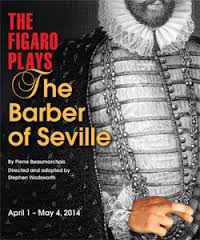 SOUNDTRACK: A Clockwork Orange soundtrack (1972).
SOUNDTRACK: A Clockwork Orange soundtrack (1972).
 I’ve had the CD of this soundtrack since the mid 1990s. I recall playing it all the time. I hadn’t listened to it in a while and it all came back as I listened again.
I’ve had the CD of this soundtrack since the mid 1990s. I recall playing it all the time. I hadn’t listened to it in a while and it all came back as I listened again.
This CD is a collection of classical pieces, a few odds and ends and a number of pieces by Wendy Carlos.
I don’t intend to review the classical pieces which are familiar and sound great. But the Wendy Carlos pieces deserve mention.
“Title Music from A Clockwork Orange” (2:21) (From Henry Purcell’s Music for the Funeral of Queen Mary). It is fascinating to realize that most of the carlos pieces on this soundtrack are actually classical compositions that she has arranged for the Moog (I assume she is playing the Moog on these). This piece starts with swirling sounds which turn into a fast melody with drums that are probably low synth notes. There’s a sprinkling of very odd sounds thrown in the mix which really give everything an unearthly feel.
“The Thieving Magpie (Abridged)” (5:57) [Rossini-Rome Opera House Orchestra]
“Theme from A Clockwork Orange (Beethoviana)” (1:44) In the movie, the main character loves Beethoven. So there are a number of pieces from Beethoven that Carlos has arranged here. This one sounds amazing in this gentle piece with that otherworldly synthesizer music and of staccato notes and chords.
“Ninth Symphony, Second Movement (Abridged)” [Beethoven-Berlin Philharmonic] (3:48)
“March from A Clockwork Orange (Ninth Symphony, Fourth Movement, Abridged)” [Beethoven] (7:00) This is the most striking song on the disc with the synthesized “voices” singing the melody on top of a complex synthesizer pattern. After two minutes it slows and changes styles dramatically becoming more of a march with whistles and chimes and again those haunting voices. The end of the piece has a full choir of the haunting voices which sounds even more amazing. I’m so curious how she did this. Are there actual voices that she recorded and manipulated or are they generated from notes and manipulated to sound like voices? It says articulations by Rachel Elkind [now Rachel Elkind-Tourre], so I guess she sang and was manipulated?
“William Tell Overture (Abridged)” (1:17) [Rossini] This piece opens with the familiar horns but as this incredibly fast paced track moves along you can hear the synth notes especially in the quieter middle part. I wonder if those horns were real?
“Pomp and Circumstance March No. I” (4:28) [Elgar]
“Pomp and Circumstance March No. IV” (Abridged) (1:33) [Elgar]
“Timesteps (Excerpt)” (4:13) This is the only fully original piece on the soundtrack. It sounds like nothing else. It is a gorgeous spooky composition of tinkling sounds, low gonglike sounds and celestial voices. It grows somewhat menacing with lots of fast unique sounds skittering around a low throbbing bass. She adds in sounds that seems sped up (which makes no sense really), but they do. At one pint the two melodies seem to run counterpoint–low notes going in one direction, high notes in the other.
“Overture to the Sun” (rerecorded instrumental from Sound of Sunforest, 1969) (1:40). I have always loved this middle-ages sounding song, but I had no idea where it came from. Turns out it is by the band Sunforest and comes from their only album Sound of Sunforest, 1969. They were an English psychedelic folk group. You can play some of the album on YouTube (which sounds a lot like Jefferson Airplane).
“I Want to Marry a Lighthouse Keeper” (rerecorded song from Sound of Sunforest, 1969) (1:00). This song is also on the Sunforest album, although it sounds very different here. I’ve always assumed this was some kind of fifties song and had no idea that this is probably the only place most people know it from. It’s a shame this album is so hard to find.
“William Tell Overture (Abridged)” (2:58) [Rossini-Rome Opera House Orchestra]
“Suicide Scherzo (Ninth Symphony, Second Movement, Abridged)” (3:07) [Beethoven] The perfect use of Carlos’ bouncy synths sounds. It’s amazing to hear her layering sounds as the song gets very big and seems to get away from her into an almost chaotic conclusion.
“Ninth Symphony, Fourth Movement (Abridged)” (1:34) [Beethoven-Berlin Philharmonic]
“Singin’ in the Rain” (2:36) [Gene Kelly]. This is a cute ending and seems to tie in to “Lighthouse Keeper” even though it clearly doesn’t.
This is a really fun soundtrack. It is too bad that Carlos’s music is unavailable anywhere because it is really quite eye-opening even fifty years later.
[READ: October 15, 2020] “The Well-Tempered Synthesizer”
This article is a book review of Wendy Carlos: A Biography by Amanda Sewell.
I don’t plan to read the book, but I found the summary to be quite interesting.
I’ve known of Wendy Carlos for many years, primarily from her work on A Clockwork Orange soundtrack. I remember initially seeing that the music was recorded by Walter and/or Wendy Carlos and assuming that they were siblings or spouses. It was certainly a confusing listing and once that, it turns out, was rather offensive to her.
So I know a little bit about her personal story, but this review added a lot of details to her life that I didn’t know.
Most importantly is that none of her music is available online pretty much anywhere. Even when people post it, it is taken down quickly. (more…)


